It was that distinct big-hound bawl booming up from the hollow that got my attention. The sound rolled over top of choppy beagle barks and brought my focus to the mountain bench below. Gripping the shotgun, I focused every bit of my 10-year-old awareness on that Ozark bench and waited as plumes of vapor drifted up with every ragged breath. Dry oak leaves crunched with the rhythm of a running deer. But before I could shoulder the old 16 gauge, the brown form dashed across my lane of view and that familiar white flag of defeat waved goodbye. Not far behind, my uncle’s long-legged bluetick hound trotted through, nose to the ground, bellowing with every other step. Seemingly minutes later, my beagles Ziggy and Rascal, yipped and yelped on the trail, and I remember wanting to call them over for a few pats on the head. But knowing that Dad frowned on pampering the dogs while hunting, I simply watched them trail the deer down into the hollow.
This was deer hunting for the Sain clan in Newton County, Arkansas circa 1981. The vast Ozark National Forest surrounding my grandparent’s property was our hunting ground, and it was tough hunting. Mountain deer were sparse. Couple that with rugged terrain and a utilitarian attitude toward hunting, and it’s easy to see how the hounds became a favored tactic. The few deer checked at my grandparent’s country store were mostly credited to the dogs. My name was never on one of those tags, though, and even my dad rarely scored.
I quit dog hunting when I bought my first bow at age 15. I even protested the hounds — pushed to get them outlawed — because it seemed too easy. Though the numbers didn’t support it, though we rarely saw more than a handful of deer per season, and though I never killed a deer by way of dog, I thought deer hunting with dogs was unfair to the deer.
As I became more proficient with the bow, the gun seemed unfair as well. That arrogant yet accurate bowhunter’s mantra — A bowhunt begins where a gun hunt ends — became my creed. My goal was to get whisker-counting close, and I worked at it. I studied topographical maps and walked my ass off, probing the terrain, searching for the place I could predict a deer’s path would intersect my stand within a 20 yard radius. Physical and mental work was the sacrifice I made for the deer. But then circumstances changed.
It was only 55 acres surrounded by other rural holdings, but it was all mine. I bought it when the food plot/corn feeder craze really hit whitetail hunting culture. No more winter scouting, no more topographical maps, but plenty of deer. In fact, I expected to see deer on every hunt. A sense of entitlement followed me to the stand. I practiced selective killing and doe management while perched above a green plot with a corn feeder sitting in the distance just far enough away for me to feel OK about it. It was a far cry from everything the hunt had offered in years past.
More Like This
But long sits in a tree offer opportunity to think, and one bright November afternoon all that thinking led to a question. Perhaps the best way to describe it was doubt because it was a question I could not articulate. I felt as though something had been lost along the way.
I’ve written previously about my thoughts on calling hunting and fishing a sport, but for the sake of argument, let’s settle on “sport” as the designation for hunting outside of utilitarian, pure survival, meat-on-the-table hunting. But what constitutes “sport?” Philosopher Jose Ortega y Gasset, in his thought provoking book “Meditations on Hunting,” said that separating sport from utilitarian hunting was pointless: “That hunting is a sport is incidental. There is also the purely utilitarian form of hunting, which was practiced by Paleolithic man and which the poacher of any epoch practices. This type of hunting, not at all sport hunting, is no less hunting than is the other type.”
Gasset’s words cut to the bone of what hunting is. Dress it in pretense, substitute other verbs to sanitize it, and argue about method all you want — hunting is still about killing. Gasset’s take on sport and hunting was the catalyst for my doubt. It led me to my own meditations on hunting.
Hunting, by it’s most primal and basic definition, is not a sporting endeavor. It’s defined as a sport today in the developed world only because it is not a necessity. Sure, we eat our kills and many of us nearly live on meat that’s never rested on styrofoam. The meat is our connection to times-past, when running the herd off a cliff was the most effective means to an end. Explaining the idea of a sporting kill to our grandfathers from the Pleistocene or some Ozark hunters from my childhood would be like trying to explain a sporting kill the to the coyote. It’s a concept beyond their scope of understanding. It’s a concept afforded to us only because a refrigerator full of food allows it.
What we search for, what we pay homage to when we pick up a weapon and take to the woods, is that hunt for survival. Our efforts to level the playing field and earn our kills are symbolic gestures. They’re meant as a sign of respect to the animal and to those who followed the mammoth herds, and our closer kin from just decades ago who survived on what the wilderness had to offer. We want so badly to emulate this purest form of hunting, but we can’t even understand it. We try to do it through sacrifice of convenience, and that’s why getting a pizza could never be considered sport. It’s why I took a long hard look at my tactics on that crisp November day. Of course, the definition of convenience is up to the individual, and a long list of variables define it. As Robert M. Pirsig said so succinctly, the ultimate test is your serenity. Sweating your butt off while preparing a food plot might be your definition of sacrifice.
As for me, I’ve gone back to hunting away from the food plots and feeders. I’ve quit using cameras and even broke out my old paper topographical maps. This November, after 24 years of exclusively bowhunting, I dusted off Dad’s Model 94 30-30 and remembered his advice of taking a full bead as I fired a few rounds. The nagging feeling that I’ve left something behind has dissipated a bit, but I’m still searching. I think I can find what I’m looking for with rifle in hand on one of those Ozark ridges.




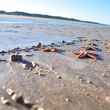










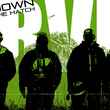





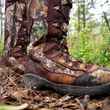



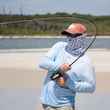




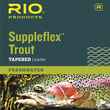

Comments